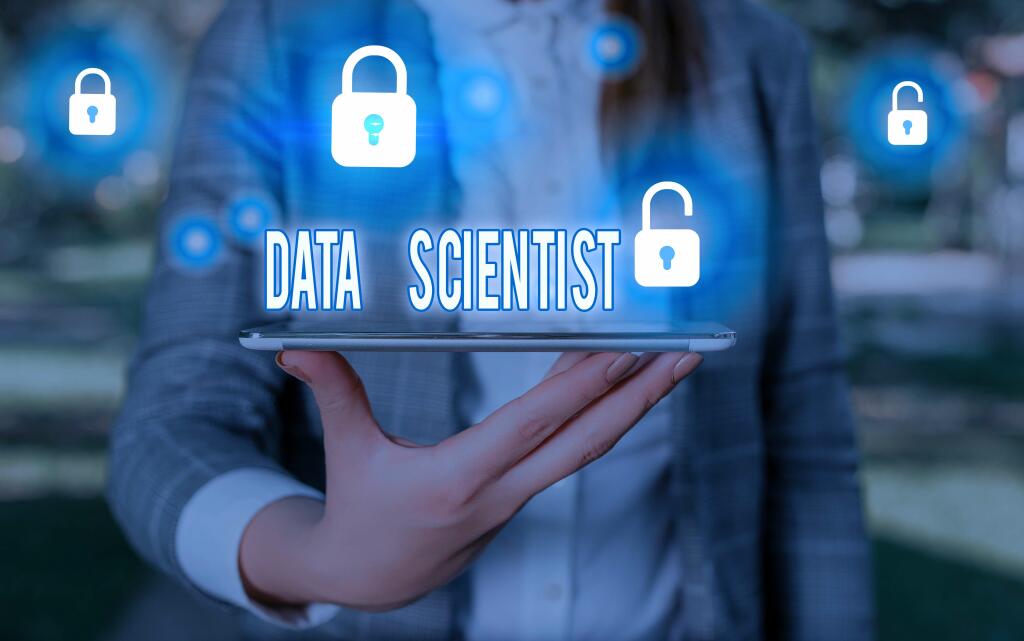In manufacturing, it can be effective at making things, as well as making them better and cheaper. The manufacturing industry has always been eager to embrace new technologies – and doing so successfully. Now, with AI adoption, they are able to make rapid, data-driven decisions, optimize manufacturing processes, minimize operational costs, and improve the way they serve their customers. This doesn’t mean that manufacturing will be taken over by the machines – AI is now an augmentation to human work and nothing can be a substitute of human intelligence and the ability to adapt to unexpected changes. Quality assurance can often be an afterthought which then results in additional unplanned costs, delayed time-to-market, customer dissatisfaction, and a decrease in the company’s reputation. With the goal to eliminate those risks, Accedia created a solution for one of our clients in the Manufacturing industry to help their employees, engineers, and clients in forecasting future failures in the production of bearings.
Simulations demonstrate that the GA-BP algorithm, as opposed to standard coating thickness models, increases estimation precision and converges quicker and that it can be used as input in a closed loop zinc layer thickness control method. In particular, reinforcement learning, a subfield of machine learning, is widely adopted for learning control policies (Challenge 3) in robotics. This is mainly because reinforcement learning involves a computational agent that makes decisions by trial and error, and it has been shown to be highly efficient in modeling human-like cognitive behavior in the real world. Lillicrap et al. [48] presented a model-free algorithm based on Deep Q-Network (DQN) that can operate over continuous action space. It is shown that even without getting full access to the dynamics of the domain, it outperforms the conventional planning algorithms with full access on more than 20 simulated physics tasks, including cart pole swing-up. This is made possible by adapting DQN to continuous domains by simply discretizing the action space.
The Use Of Artificial Intelligence(AI) In Manufacturing Industry
Ascalia, working alongside Sainsbury’s, is working towards finding a solution to microbial control in ready-to-eat foods. By using AI and high-tech cameras, it’ll make sure food is safe from both microbes and rotting. Singular Intelligence is also working with the supermarket to make use of AI-based decision-making in order to develop a predictive shelf-life model for its supply chain, including an automated and centralized optimal control system. In product optimization, AI and machine learning, in particular, can be powerful tools in minimizing the use of additives and energy in industrial processes. Traditional methods still have a certain degree of uncertainty as part of complex chemical processes, with extra quantities of pricey additives being used to cover deviations in processing.

However, this period should not deter them from pursuing AI solutions, as the benefits, in the long run, will outweigh the initial challenges. Advertise with TechnologyAdvice on Datamation and our other data and technology-focused platforms. The more people working on an assembly line, the more opportunities there are for errors to creep in. Therefore, automation and robotics are being introduced by many manufacturers to eliminate errors.
Applications of AI for Manufacturing Process Enhancement
Jiang et al. [55] introduced a new architecture, MSCNN, which acquires high-level, robust fault characteristics at various time scales directly by hierarchical learning from complex raw vibration signals in a parallel way. It substitutes for better robustness against noises of a wide range than the conventional CNN, heavily relying on the hand-crafted features, thus mainly reducing the demand for prior information and time-consuming signal processing steps. Therefore, due to its end-to-end feature learning capability, the proposed method can offer a valuable alternative as a general-purpose classification technique for intelligent fault diagnosis. Radford et al. [56] proposed deep convolutional generative adversarial networks (DCGANs) for health condition monitoring (HCM) in an unsupervised manner. In contrast with existing unsupervised models such as autoencoder (AE), Chen et al. [57] also utilized DCGAN for long-term accurate HCM of a WT bearing.

The greatest benefit of this algorithm is that, by way of the structural risk minimization theory, it can prevent dimensionality disasters with kernel features and realize the optimum generalization efficiency of the algorithm. Steel mills, also known as steelworks, are one of the most fundamental industries in the modern world, which specialize in steel production. In this section, AI applications in various steelmaking such as ironmaking, casting, rolling, and galvanizing are introduced. To achieve more sustainable production and environmentally beneficial methods, this steel section mostly discusses FDD, and comparative study of several techniques, modeling, and forecasting of production.
Inventory management
Despite this, artificial intelligence, machine learning and cloud computing have yet to be widely adopted by industrial manufacturers. While it seems logical to control the massive amounts of complex industrial equipment needed for manufacturing with digitalization, technology is not replacing humans nearly as fast as it potentially could. Adoption of AI technology in manufacturing industry will assist manufacturers in monitor and analyze the device performance and predict the need of overhaul or maintenance services. Such automated process will prevent the equipment breakdowns and ensure efficient productivity.
Across the banking industry, for example, gen AI could deliver value equal to an additional $200 billion to $340 billion in annual revenues. In the retail and consumer sectors, the potential revenue impact could reach $400 billion to $660 billion annually. However, manufacturers should be aware that AI is not a “one and done” technology. It will require additional investment and a commitment to digital transformation. For now, companies are dipping their toes in the water and making incremental changes, rather than going all in. There’s still a lot of work to be done to make artificial intelligence a reality.
Artificial Intelligence In Manufacturing: Four Use Cases You Need To Know In 2023
Even though image-based detection is taking over much of the highlights, there is a substantial amount of studies regarding signal-based methods. Lee et al. [86] showed that fault diagnosis to find root causes of process failures could be effectively carried out even using a black box CNN model. This is enabled particularly by tailoring the CNN’s receptive field over multivariate sensor signals along the time axis that allows for the association of its extracted features from hidden layers with the physical meaning of raw data. Lee et al. [87] focused on reducing the noise while maintaining valuable information as much as possible for reliable and robust fault monitoring. For reducing the noise, the author proposes SDAE for which several DAEs are pre-trained with latent representation from the previous time step given as input.
Generative AI can also become a bulwark of Europe’s ambitions to lead the green business building (GBB) revolution of the future. In an off-camera conversation with Alex Sukharevsky, he noted that generative AI could become a cornerstone of the technology stack required for the analysis and reporting of the impact green business hope to achieve. The main objective is to develop a system that will be able to solve production problems by itself with minimal human intervention. In the next section, you will learn how AI is step-by-step used in manufacturing. Hence, AI can be a huge help in streamlining processes and eventually increase productivity. As you know, artificial intelligence refers to an intelligent machine that can think and learn like human beings.
Subscribe to Data Insider
Those numbers are not a surprise if we consider the effect AI can have not only on the business side of Manufacturing but also on the company employees. It decreases over time, helps learn new skills and technologies while shortening the time required for onboarding, and overall improves the work environment. Additionally, embracing AI increases employee productivity by allowing for repetitive tasks such as data entering and creating Excel sheets to be automated. Thus, leaving employees more time to focus on other more important aspects of their work. Li et al. [73] proposed precise bending force prediction, which can enhance the control precision and flatness of the strip crown and further boost the strip shape quality.
- But they are getting smarter through AI innovation, which is making collaboration between humans and robots safer and more efficient.
- SNN is favored for current HMT prediction because DNN has an acute model complexity and calculation expense than SNN.
- Consequently, intelligent applications deliver experiences that dynamically adapt to the user.
- First, the importance of each physical–chemical variable on the segregation is addressed via the model.
- Today, most of the AI in the manufacturing industry is used for measurement, nondestructive testing (NDT), and other processes.
- As a result just in 2020 alone, over 40% of manufacturing companies suffered a cyber attack.
Autonomous robots or robotic process automation equipped with AI can perform a variety of tasks in manufacturing companies, such as assembly, material handling, and quality assurance. This technology helps manufacturers improve efficiency, reduce costs, and improve worker safety. Artificial Intelligence (AI), particularly generative AI, is set to further accelerate the transformation of the manufacturing and industrial sector.
Digital twins help boost performance
AI systems help manufacturers forecast when or if functional equipment will fail so its maintenance and repair can be scheduled before the failure occurs. Thanks to AI-powered predictive maintenance, manufacturers can improve efficiency while reducing the cost of machine failure. AI-Augmented Development
AI-augmented AI in Manufacturing development is the use of AI technologies, such as GenAI and machine learning, to aid software engineers in designing, coding and testing applications. AI-assisted software engineering improves developer productivity and enables development teams to address the increasing demand for software to run the business.
Study: In-House Communications Leaders “Open-Minded, But … – PRovoke Media
Study: In-House Communications Leaders “Open-Minded, But ….
Posted: Mon, 23 Oct 2023 11:52:00 GMT [source]


